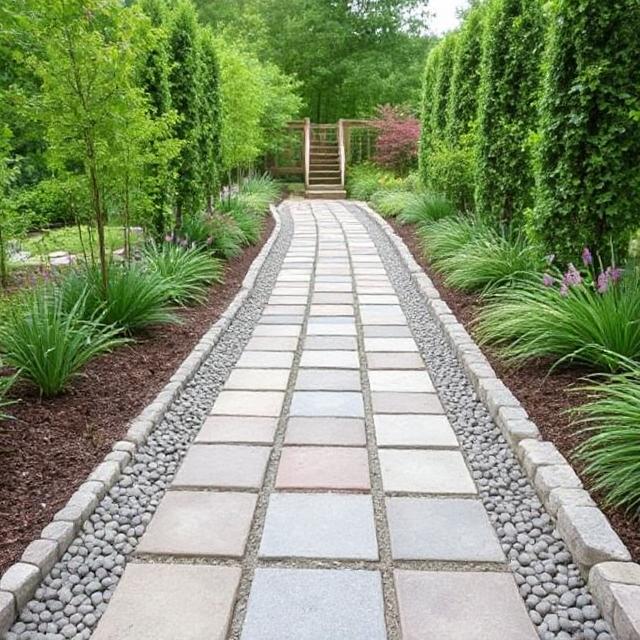
Garden walkways are more than just functional paths—they’re opportunities to enhance the beauty, atmosphere, and character of your outdoor space. Whether you’re aiming for a rustic look, modern flair, or whimsical charm, the right walkway design can completely transform your garden. In this blog, we’ll explore ten inspiring walkway ideas that blend style and practicality to elevate your garden into a stunning retreat.
1. Natural Stone Pathways for a Rustic Feel
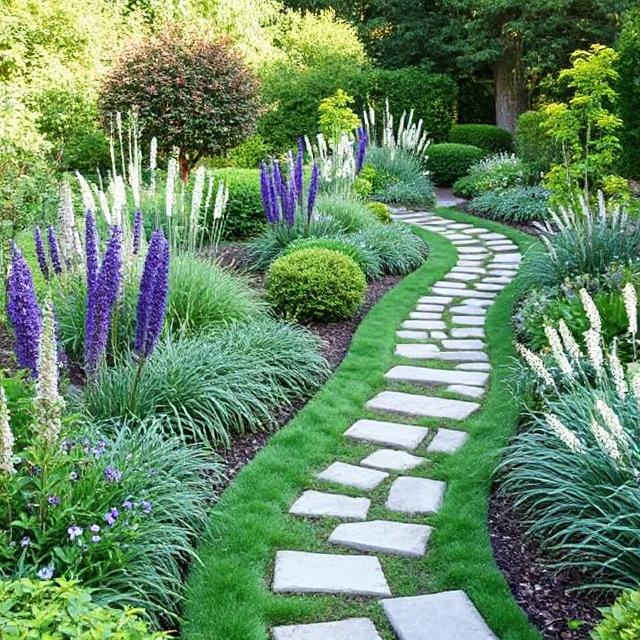
Natural stone walkways are a timeless choice that brings organic beauty into any garden setting. Irregularly shaped flagstones or stepping stones add a rustic charm and blend seamlessly into greenery. These stones come in various textures and earthy tones, making it easy to match your garden’s aesthetic. Pair them with moss or creeping thyme between the gaps for a soft, romantic effect. Natural stone also ages beautifully, gaining character over time. It’s a perfect fit for cottage gardens or woodland-inspired landscapes.
2. Gravel Paths with Edging for a Clean Look
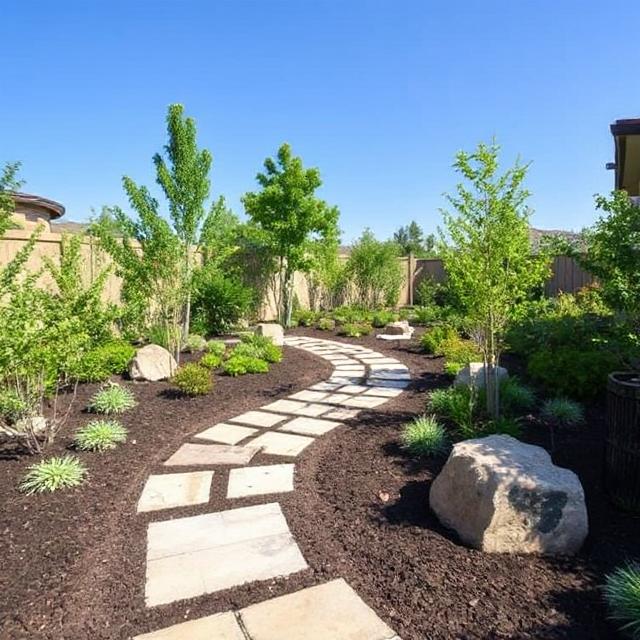
Gravel walkways are budget-friendly, easy to install, and ideal for both large and small gardens. Using pea gravel or crushed stone gives a relaxed, informal appearance while maintaining durability. To prevent the gravel from spreading, add edging with bricks, timber, or metal strips. This not only defines the path but also gives it a polished finish. Over time, gravel compacts underfoot, making it more comfortable to walk on. Pair your gravel path with solar lights or lanterns for a magical nighttime ambiance.
3. Paver Walkways for a Contemporary Tou
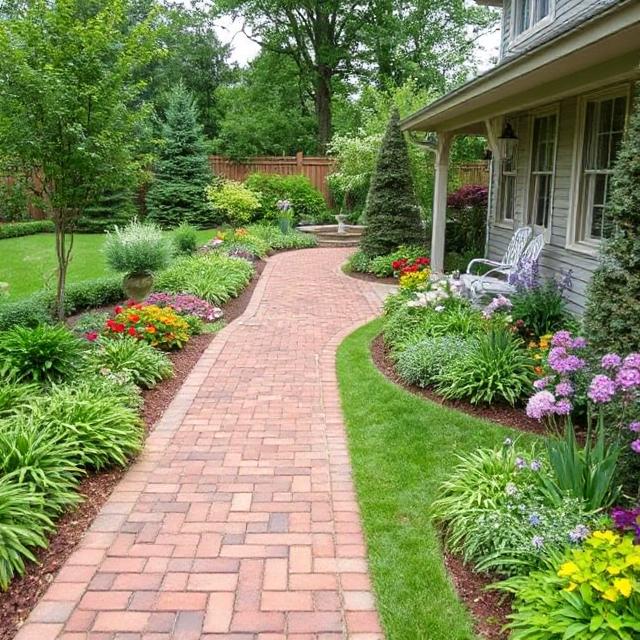
Concrete or clay pavers offer a neat, uniform look that suits modern or formal gardens. Available in countless shapes, patterns, and colors, pavers give you design flexibility like no other. Consider laying them in a herringbone or basket weave pattern for visual interest. They’re also low-maintenance and incredibly durable under heavy foot traffic. To soften the structured look, incorporate groundcovers or ornamental grasses along the edges. Paver walkways work well when leading to patios, seating areas, or focal points.
4. Wooden Plank Paths for Natural Warmth
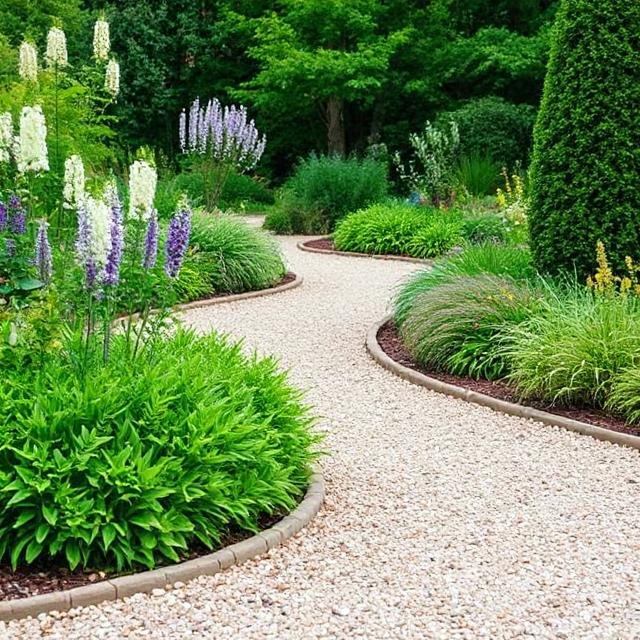
If you love a more natural and eco-friendly design, wooden plank walkways can bring warmth and charm to your garden. Especially effective in damp or shaded areas, they offer traction and a raised platform that keeps feet dry. Use weather-resistant hardwoods like cedar or teak for longevity. A wooden path weaving through ferns and shade-loving plants creates a storybook-like atmosphere. Keep the wood treated and elevated with supports or gravel underneath to prevent rot. It’s perfect for tropical or forest-inspired gardens.
5. Stepping Stones Across Grass or Gravel
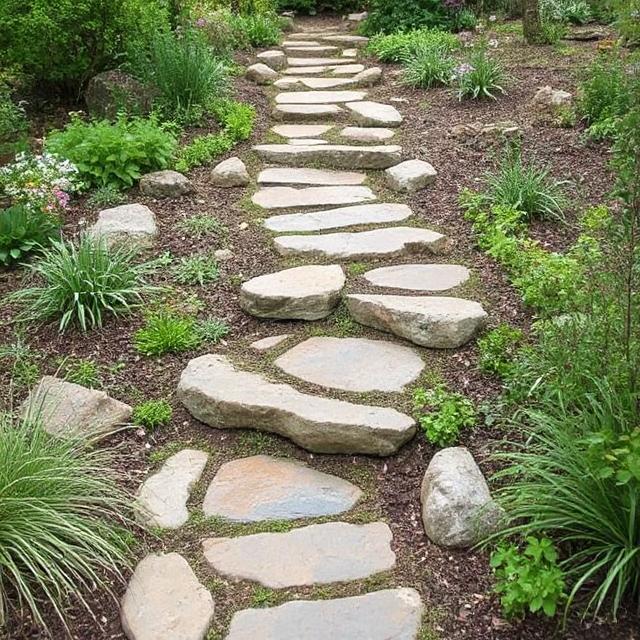
Stepping stones are a playful and elegant way to guide visitors through your garden. Whether set in gravel or directly in the lawn, they offer a subtle path without overwhelming the landscape. Irregularly shaped stones look more natural, while symmetrical ones create a formal feel. Add contrast by using white or black stones against lush green grass. Stepping stones are also ideal for connecting different zones in the garden without the need for full paving. This style encourages a leisurely, exploratory pace.
6. Brick Walkways for Traditional Elegance
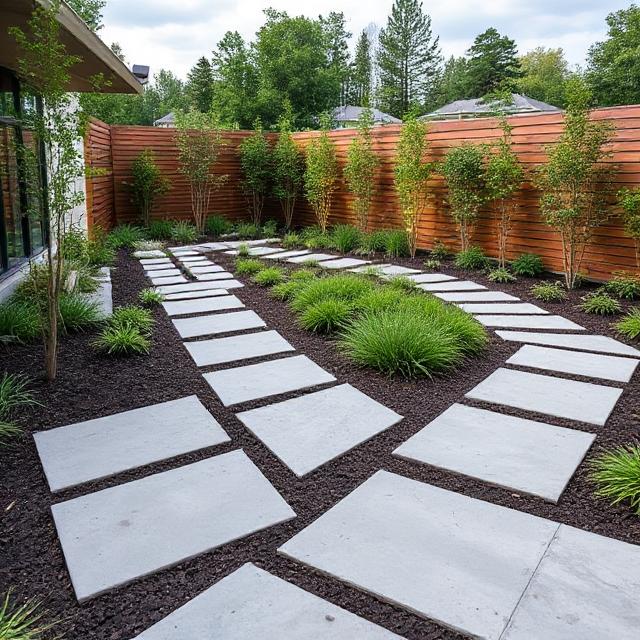
Brick paths have a nostalgic charm that fits beautifully in classic, English-style, or colonial gardens. The rich red and brown hues offer warmth and complement green landscapes effortlessly. Bricks can be laid in various patterns like running bond, herringbone, or circular motifs for extra flair. They also weather attractively, developing a timeless patina over the years. Surrounding your brick walkway with boxwood hedges or rose bushes enhances the romantic, traditional vibe. It’s a great long-term investment for any garden setting.
7. Mosaic and Tile Walkways for Artistic Flair
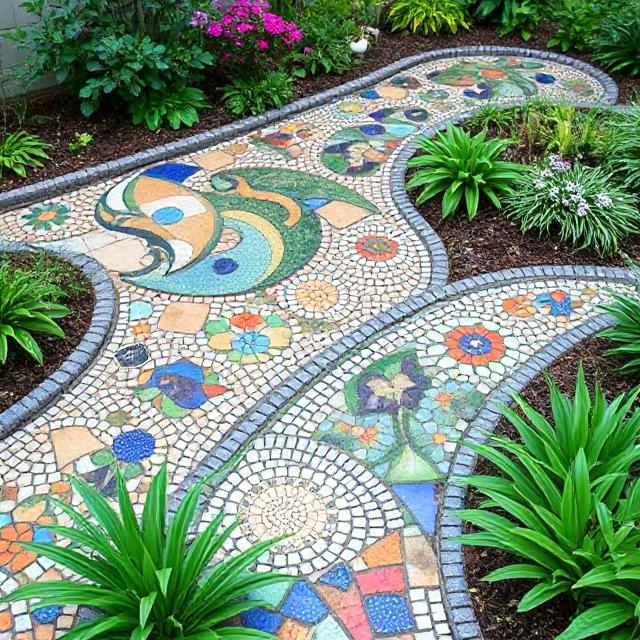
If you want your garden to express your personality, mosaic and tile walkways add a pop of color and artistry. Use broken ceramics, pebbles, or decorative tiles to create patterns, symbols, or scenes. These paths work well in Mediterranean, Spanish, or bohemian garden styles. While more labor-intensive to install, the result is truly unique and eye-catching. Mosaic paths are also a creative way to reuse materials and make your walkway eco-conscious. Seal them properly to protect against weathering and enhance their longevity.
8. Mulch or Bark Paths for a Soft, Natural Vibe
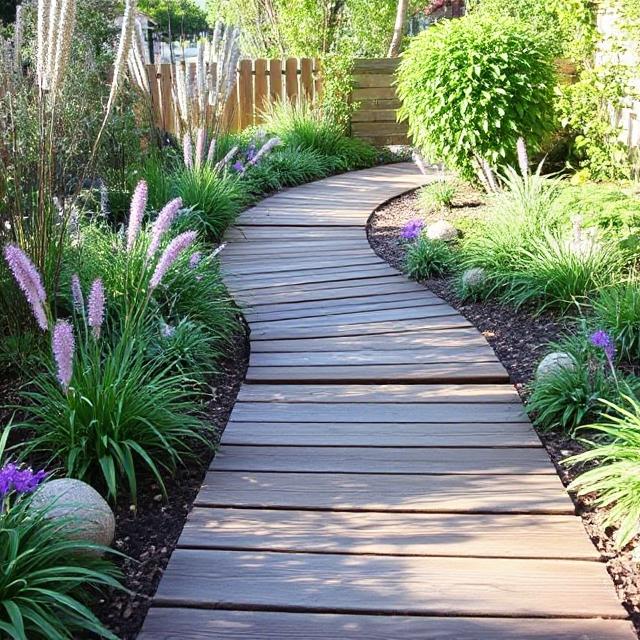
For a low-cost and low-maintenance solution, mulch or bark walkways are excellent options. These paths blend into the landscape and feel cushy underfoot, making them ideal for barefoot-friendly garden zones. Use hardwood mulch or pine bark to prevent rapid decomposition. You can frame the edges with logs, bricks, or natural stones to define the path. These walkways are especially useful in vegetable gardens, woodland areas, or kids’ play spaces. Just remember to refresh the mulch annually to maintain its appearance and depth.
9. Concrete Slab Walkways with Modern Geometry
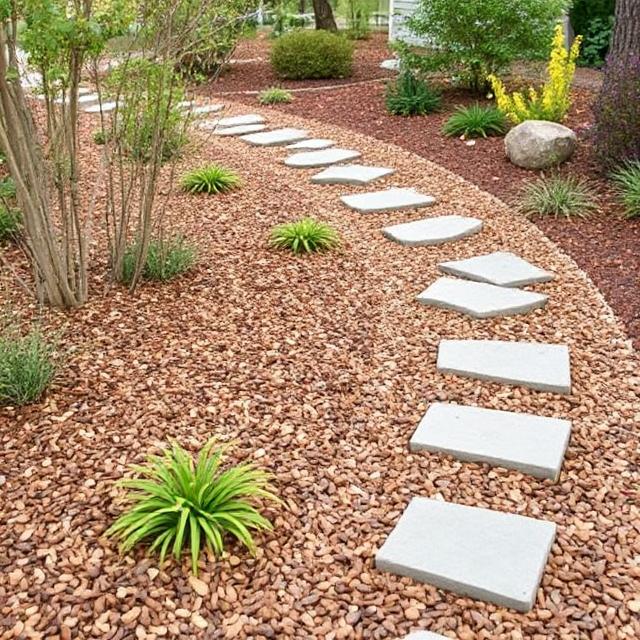
Concrete slabs bring a clean, minimalistic aesthetic to modern gardens. You can pour them in various shapes—squares, rectangles, or even geometric patterns—for a bold design statement. Spacing the slabs with turf or gravel in between softens the look and adds interest. You can also opt for stained or stamped concrete for added texture and color. These paths are sleek, durable, and weather-resistant, ideal for high-traffic garden areas. Concrete slabs work especially well in Zen-inspired or desert-style landscapes.
10. Curved Garden Paths That Guide the Eye
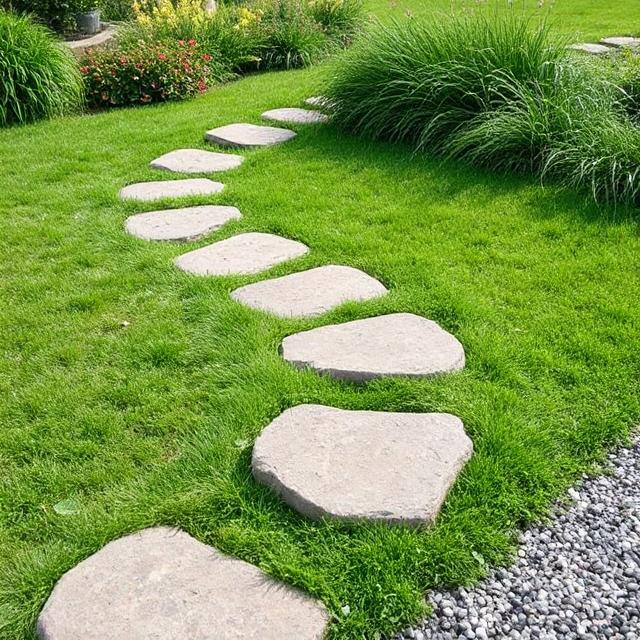
Instead of straight lines, consider designing curved or winding walkways to add movement and intrigue to your garden. Curves encourage exploration and help the garden unfold gradually. They can guide the eye toward focal points like fountains, sculptures, or seating areas. Materials like flagstones, bricks, or even gravel can be used to build these meandering paths. Add low-growing plants or lighting along the curve to enhance the effect. This design is ideal for larger gardens or anyone wanting a touch of whimsy.
Bonus Tips for Designing the Perfect Garden Walkway
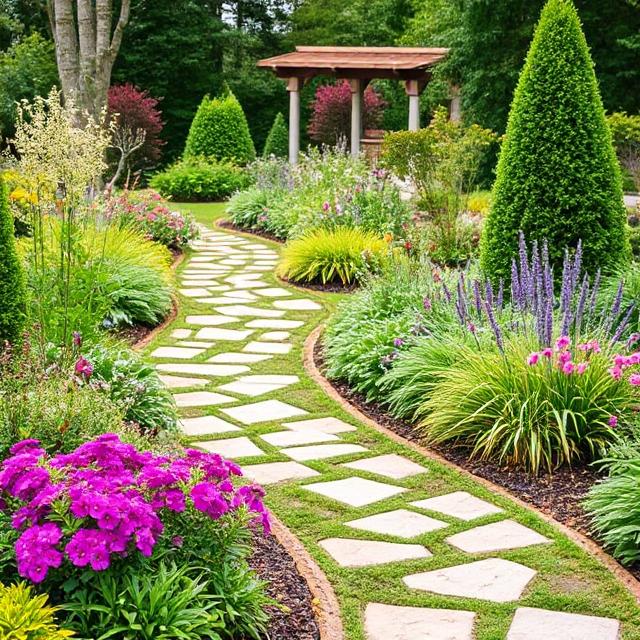
Designing a garden walkway goes beyond just picking materials. Consider the overall layout of your garden and how the path will interact with plants, structures, and views. A well-placed path should flow naturally and feel like an invitation. Think about the functionality too—does it need to be wide enough for wheelbarrows? Is it meant for leisurely strolls or direct access?
Lighting is another crucial element. Solar-powered path lights, string lights, or lanterns not only provide visibility but also elevate the mood in the evenings. Borders also matter—clean edging can make a walkway look polished, while more organic borders can soften the lines and blend into nature.
Lastly, balance is key. Combine hardscape and softscape thoughtfully, keeping scale and proportion in mind. A beautiful garden walkway isn’t just about the path—it’s about how it connects the entire outdoor experience.
Final Thoughts
The right walkway design can turn your garden from ordinary to extraordinary. Whether you lean toward natural stone, rustic mulch, or sleek concrete, there’s a style to suit every aesthetic and budget. Each of these walkway ideas not only enhances visual appeal but also boosts the functionality and enjoyment of your outdoor space. Start with your garden’s style and needs, and let your creativity lead the way. Your perfect garden path is just a few steps away—literally.

Hazel Collins is the creative voice behind Room Layered. With years of blogging experience, she shares her passion for home decor, DIY projects, and styling tips to help readers create beautiful, personalized spaces. Her ideas blend charm with practicality, making home inspiration feel both achievable and stylish.